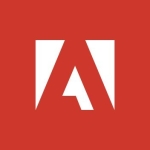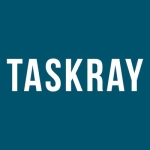What is our primary use case?
Asana is mainly used for our marketing teams. Anytime a client has a campaign that they want to get out there, whether it's on Facebook, Instagram, or any sort of integrated marketing campaign, we build out a project for it in Asana, and we manage all the logistics of it. Discovery, design, development, and deployment are the main phases that we use to manage projects in Asana.
In terms of its version, we are using the business tier.
What is most valuable?
I really enjoy the portfolios in Asana. One of the ways Asana stands out to me is with portfolios. You can have all your different projects, and you can have those assigned to different teams. If you want to customize a grouping of projects, you can use portfolios. For instance, one of the things that we do is we can assign a portfolio to a specific strategic objective we have, and we can put all those projects that are related to that strategic objective in that portfolio. We then know exactly what people are working on to help us achieve our goals. So, I really like portfolios.
Another piece that I like is the proofing. I like how you can just click on the image in Asana and attach comments to it, and it'll turn into a task. It just makes the proofing process really intuitive, as opposed to using something like Adobe Acrobat or something like that.
One of Asana's differentiators is how easy it is to set up. Another area where Asana is strong is that the information is near real-time, and you don't have to save anything in order for the information to show up. All the information is pretty much real-time. So, if I add a task to somebody's task list, it's going to show up immediately, and they're going to see it. They're going to get a notification about it.
What needs improvement?
Their workflows and automation could use a big improvement. I don't even know if they have anything in that regard right now. I would really love to see a way where you can send custom alerts based on a task's completion or status change or an approval coming through. I would love to see a way to get some low-code functionality into Asana because right now, that is a big miss.
On top of that, their dashboards are incredibly lacking. The way the widgets connect to the projects, they don't pull the data in the way that I really want them to. When I build a dashboard in Asana versus Smartsheet, I can't pull in data via a custom text field in Asana, but in Smartsheet, I can. That's a huge advantage because sometimes, you just want to report on really niche tasks or a launch date in a specific project or a collection of projects, and Smartsheet's dashboard features will let you do that, but Asana won't. So, their dashboards are lacking, and the workflows are pretty below where the market is right now.
I would love to see a complete revamp of how they do dashboards right now. Dashboards are really poor. They don't display information well, and they don't look good. They don't pull in data in an advanced search kind of way. They are very simplistic. If you're a traditional project manager and you're PMP certified and you understand project management, you're going to be very frustrated with Asana's dashboards because they do not speak the language of project management. That's because of the way they are set up. So, I would like to see that completely revamped. It's just not an industry standard.
For how long have I used the solution?
I've been using Asana for four years.
What do I think about the stability of the solution?
I've had it go down more than Smartsheet, which is one of the two tools that we've used. I've had it go down twice over the past two years. It is not too bad, but it is definitely something to consider.
Asana does have a website called Asana Status where you can check the stability of the site. They let you know if they're experiencing any issues. You can get real-time updates on anything that's going on with the site.
What do I think about the scalability of the solution?
We have 60 or 65 licenses. Its scalability is pricey. It is easy to add users. It is quite simple and not complicated, but it is pricey. We're on the business tier, which is $25 a month. Anytime you want to add users to the system, it's going to cost you money if you want to assign them tasks and you want them to be able to operate, comment, and complete things in your system. This is something to definitely consider if you're a lean or a startup organization, and you're trying to be cost-effective. There is just no simple sharing. Smartsheet is very simple with its sharing, whereas, with Asana, you need a license. You also can't just add one user to the system; you have to add a bucket of five. It's definitely worth considering.
How are customer service and support?
We didn't use their technical support, but we did use our customer success manager. Asana's support isn't as robust as other tools or other communities. If I Google a question in regards to Smartsheet, there is a community post about it. Somebody most likely would have answered the question before, whereas Asana just doesn't have the same kind of community. When I do search for a question, normally, the person who responds to the question on the forum is like a sales rep who says, "Hey, thanks for your question. We don't have this feature yet. Please submit a request," which doesn't really help me out.
Which solution did I use previously and why did I switch?
We had spreadsheets. When you go from Excel or a spreadsheet, anything looks appetizing. All the tools look great because everything is there on the spreadsheet.
The reason why we went for it originally was just that it does task management really well. It's simple. It does task management. It keeps your projects organized in a much cleaner fashion than a spreadsheet. It wasn't hard to stand up. So, the ease of use and the fact that it kept us organized at the time was exactly what we needed.
We saw us using Asana, and we knew it was a big market player. We needed something, and at the time, we probably had 20 to 30 people. We might have had just 15 people at the time, and we thought that it is not going to cost us that much. So, we purchased it, but as we scaled, we realized that we needed more complex visualizations for dashboards and reporting in our projects. We realized that Asana wasn't perfect, but we were too deep to make a switch because the switching cost was too high.
How was the initial setup?
This is probably where Asana has its biggest differentiator. It's probably the easiest to set up of all the project management tools that I've used. The draw to it is that people get on a demo with Asana and they find it very easy to use. It's just tasks and assigning people's names to those tasks. If you're an organization that wasn't organized before, you're managing stuff out of spreadsheets and you bump into Asana, you're going to see a big benefit to it.
There are no issues with setting your projects up and getting them in front of people right away. That's another positive feature of Asana.
What was our ROI?
We likely have seen an ROI in the aggregate, but if we evaluate it in the past three or six months, we haven't got an ROI. We rely on reporting outside of the tool that could be done inside the tool, which adds on a bit of administrative bulk that we don't need. It's also because we're more of a mature organization, and we know exactly what we require out of our project data that we didn't know before. So, in the short term, return on investment hasn't been there. When we were starting out or were a startup, getting out of that startup mentality was a huge return on investment, but nowadays, that might not be the case.
What's my experience with pricing, setup cost, and licensing?
We're on the business tier, which is $25 a month if you're on an annual contract. It's $31 if you're on a month-to-month contract.
In my experience, there are no hidden costs with Asana. I know Smartsheet has these add-ons that you can buy, which is an additional cost, but Asana doesn't have any add-ons that I know of.
When you're trying to scale the product and want to add users, you have to do it in buckets of five. This is also something to consider. You can't just add one user to the system; you have to add buckets of five. At least from my knowledge and the annual contract that we have, you had buckets of five, and from there, you got to use them. So, it's definitely worth considering.
Asana might have a minimum on some of these tiers for licenses. You probably have to have 15 people at least to get the business tier. On their premium care, you could probably just get three people, but that's a nuance. I really don't remember too well.
What other advice do I have?
If you wanted to use it for the first time, my suggestion would be to consider the kind of projects you are managing. If you are managing marketing projects or events, or you are just trying to coordinate projects that have a quick turnover, and not very long life cycles, then you can evaluate Asana and get a trial going. It'll be good for you. However, if you're managing IT projects or projects with very long life cycles, such as construction or engineering-type projects, Asana definitely isn't a choice for you. Therefore, first and foremost, consider what your projects are about, and if it aligns with short-term marketing projects, you can go ahead and spin up a trial. To have a trial, build out a project yourself and try it out and understand what you like and what you don't like. Of course, it's going to have your task management and your assignee. That's going to be great, but you should also think about the proofing, reporting, and automation that you might want.
I encourage people evaluating project management tools to at least look at three or four tools because they all have got specific nuances that make them a little different, and you might like one nuance over another, but evaluating your project type is the first step.
I'm going to rate Asana a six out of ten. Asana is probably going to be more like an eight or a nine for you if you're managing marketing projects, or you're an events coordinator, or you're just trying to get your little startup together where you are a 20-person organization, and you want to organize people and need something that's easy to use. However, if you're someone like myself who's more an advanced project manager, and you're working on tech projects or long-term and more complex projects that have dependencies and require some advanced reporting for your executives to take a look at, then Asana might be a four or a five. Therefore, I'll give it the middle range of a six because it's not a bad tool. It just has to be right for you.
Which deployment model are you using for this solution?
Public Cloud
If public cloud, private cloud, or hybrid cloud, which cloud provider do you use?
Microsoft Azure
Disclosure: My company does not have a business relationship with this vendor other than being a customer.





















